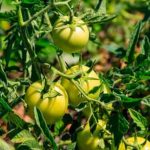Are you thinking about starting your own vegetable garden? Whether you have a green thumb or are just getting started in the world of gardening, a vegetable garden can be a rewarding and enjoyable hobby.
From the satisfaction of growing your own produce to the health benefits of eating fresh vegetables, there are countless advantages to having your own vegetable garden. If you’re ready to get started, Bunnings has all the supplies you need to create a thriving and bountiful vegetable garden right in your own backyard.
One of the greatest benefits of having a vegetable garden is the ability to enjoy fresh, homegrown produce. There is nothing quite like picking ripe tomatoes, crisp lettuce, or sweet strawberries from your own garden and incorporating them into your meals. Not only does homegrown produce taste better, but it also contains higher levels of important nutrients since it is picked at its peak ripeness.
In addition to providing delicious and nutritious food for you and your family, a vegetable garden offers numerous other rewards. It can be a therapeutic and stress-relieving activity, allowing you to connect with nature and experience the joy of watching your plants grow and flourish.
Plus, it’s an environmentally-friendly choice that reduces your carbon footprint by reducing the need for store-bought produce that has been transported long distances. If you are ready to take advantage of these benefits, keep reading for tips on how to start your very own vegetable garden and make the most out of this fulfilling experience.
Choosing the Right Location
When it comes to starting a vegetable garden, choosing the right location is crucial for the success of your plants. The three main factors to consider when selecting the perfect spot for your vegetable garden are sunlight, soil quality, and accessibility.
Sunlight
Sunlight is vital for the growth and development of vegetables. Most vegetables require at least 6-8 hours of direct sunlight per day. It’s important to choose a location that receives adequate sunlight throughout the day, whether it’s in your backyard, balcony, or rooftop. Areas shaded by buildings or trees may not be ideal for growing vegetables, so it’s essential to find a sunny spot to ensure your plants thrive.
Soil Quality
The quality of the soil in which you plant your vegetables will significantly impact their growth. Before starting your garden, it’s recommended to test the soil for pH levels and nutrient content. This will help determine if any amendments are needed to improve the soil quality.
Vegetables generally thrive in well-draining and loamy soil with a pH level between 6.0 and 7.0. If necessary, you can purchase soil testing kits and soil amendments from Bunnings to ensure that your garden soil is optimal for planting.
Accessibility
Accessibility is another important factor to consider when choosing a location for your vegetable garden. You’ll want easy access to your garden for planting, watering, weeding, and harvesting. If possible, select a location that is close to a water source and easily reachable with gardening tools. This will make maintenance tasks more convenient and enjoyable while ensuring that you can care for your vegetable garden properly.
By considering these factors when choosing the right location for your vegetable garden, you can set yourself up for success and enjoy a bountiful harvest of fresh produce.
Selecting the Best Vegetables
When it comes to selecting the best vegetables for your garden, there are a few key factors to consider. By taking into account the climate of your region, the current season, and your personal preferences, you can ensure a successful and bountiful harvest from your vegetable garden.
Climate Considerations
One of the most important factors to consider when choosing vegetables for your garden is the climate of your region. Different vegetables thrive in different types of climates, so it’s essential to select varieties that are well-suited to the conditions in your area. For example, heat-loving vegetables like tomatoes, peppers, and eggplants do well in warm climates, while cool-weather crops such as lettuce, spinach, and broccoli are better suited for cooler regions.
Seasonal Selection
Another crucial aspect of choosing the right vegetables for your garden is considering the current season. Certain vegetables are best planted at specific times of the year to maximize their growth and productivity. For instance, root crops like carrots and radishes are ideal for spring and fall planting, while summer squash and cucumbers thrive when planted in the late spring or early summer.
Personal Preferences
Finally, it’s essential to take into account your personal preferences when selecting vegetables for your garden. Consider what types of vegetables you enjoy eating and cooking with, as well as how much space you have available for planting. If you have limited space, you may want to focus on growing compact varieties or vertical gardening techniques to make the most of your vegetable garden space.
By considering these factors-climate, season, and personal preferences-you can choose the best vegetables for your garden that will thrive in your specific environment and provide you with a plentiful harvest. And if you’re looking for high-quality seeds and other supplies to get started with your vegetable garden project, Bunnings offers a wide range of products specifically tailored for vegetable gardens Bunnings that will help you get off to a great start.
Preparing the Soil
When it comes to starting a vegetable garden, one of the most crucial steps is preparing the soil. Properly preparing the soil creates an optimal environment for healthy plant growth and ensures a bountiful harvest. Here are some essential steps to properly prepare the soil for planting your vegetable garden:
1. Test the Soil: Before you begin any soil preparation, it’s important to test the pH level and nutrient content of your soil. You can easily obtain a soil testing kit from Bunnings or have a professional lab analyze your soil. This will provide valuable information on what amendments may be needed to optimize the soil for growing vegetables.
2. Amend the Soil: Once you have determined the deficiencies in your soil, it’s time to amend it accordingly. Adding organic matter such as compost, aged manure, or peat moss can improve drainage, fertility, and overall soil structure. Additionally, you may need to add specific nutrients like nitrogen, phosphorus, and potassium based on your soil test results.
3. Till the Soil: After adding amendments, thoroughly till the soil to incorporate them evenly throughout. This will create a uniform growing medium that allows plant roots to penetrate easily and access essential nutrients.
By following these steps to prepare your soil properly for planting a vegetable garden, you can set the stage for a successful and productive growing season. With all the necessary supplies available at Bunnings – including gardening tools, compost, fertilizers, and more – getting started on your vegetable garden is convenient and easy. Now that you have prepared your ideal foundation for planting, it’s time to move on to selecting your vegetables and getting them into the ground.
Planting and Maintenance
Once you have chosen the right location for your vegetable garden and have prepared the soil, it is time to start planting. When choosing vegetables to plant, consider the climate, season, and your personal preferences. It’s important to select vegetables that will thrive in your specific area.
At Bunnings, you can find a wide variety of seeds for different types of vegetables that are suitable for different climates and seasons. From tomatoes to carrots to lettuce, you can find everything you need to start your vegetable garden at Bunnings.
When it comes to planting your vegetables, make sure to follow the instructions on the seed packets or plant labels. Proper spacing between plants is crucial to allow them room to grow and access sufficient sunlight and nutrients from the soil. After planting, watering is essential for the initial growth stage of your vegetable garden.
It’s important to water regularly but not excessively – too much water can lead to root rot and other plant diseases. At Bunnings, you can also find watering systems and tools that will help you properly maintain the moisture levels in your garden.
In addition to regular watering, fertilizing is another key aspect of maintaining a healthy vegetable garden. Different types of vegetables require specific nutrients at different stages of their growth cycle. At Bunnings, you can find a variety of fertilizers and soil amendments that will help provide your plants with the nutrients they need for optimal growth.
Regular care for your vegetable garden also involves keeping an eye out for any signs of pests or disease. By regularly checking your plants for any issues and taking preventive measures as needed, you can ensure a successful harvest from your very own vegetable garden.
Pest and Disease Management
When it comes to maintaining a healthy and thriving vegetable garden, pest and disease management is essential. Here are some tips on how to prevent and manage common pests and diseases that can affect vegetable plants:
1. Identify the Problem: The first step in managing pests and diseases in your vegetable garden is to be able to identify the issue. Keep an eye out for any signs of damage or unusual growth in your plants. Common pests to watch out for include aphids, caterpillars, and snails, while diseases such as powdery mildew and blight can also wreak havoc on your garden.
2. Natural Remedies: Consider using natural remedies to control pests and diseases in your vegetable garden. For example, you can use homemade insecticidal soap to deter pests, or apply neem oil as a natural fungicide to combat fungal diseases. Introducing beneficial insects like ladybugs or lacewings can also help keep pest populations in check.
3. Regular Maintenance: Keeping up with regular maintenance tasks can also help prevent pest and disease problems in your vegetable garden. This includes proper watering practices to avoid water stress, removing any diseased plant material promptly, and practicing crop rotation to reduce the risk of soil-borne diseases.
Remember that Bunnings offers a wide range of products to help you manage pests and diseases in your vegetable garden. Whether you’re looking for organic pest control options or tools for maintaining healthy soil, Bunnings has everything you need to keep your garden thriving.
Harvesting and Enjoying the Fruits of Your Labor
Harvesting fresh vegetables from your own vegetable garden is one of the most satisfying experiences for any gardener. The joy of picking ripe tomatoes, crisp lettuce, or colorful bell peppers that you have grown yourself is unbeatable.
Not only do homegrown vegetables taste better than store-bought ones, but they are also packed with more nutrients since they are picked at their peak ripeness. This means that you and your family can enjoy the freshest and healthiest produce straight from your garden to your table.
When it comes to harvesting, timing is key. It’s essential to pick vegetables when they are at their peak flavor and maturity. For example, tomatoes should be harvested when they are fully colored and firm but still give slightly to the touch. Green beans are best picked when the pods are smooth and firm, while lettuce leaves should be harvested when they reach a good size but before they turn bitter.
In addition to enjoying the fruits of your labor at mealtime, consider sharing the bounty of your vegetable garden with neighbors, friends, or local food banks. Freshly harvested vegetables make thoughtful and nutritious gifts that can brighten someone’s day while reducing food waste.
Plus, there’s nothing quite like the feeling of giving back to the community through something as simple as sharing the harvest from your own backyard. When planning a vegetable garden in Bunnings Australia remember that starting small will allow you to slowly expand as you become more comfortable with gardening.
| Harvesting Tips | Vegetables Types |
|---|---|
| Pick vegetables at peak ripeness | Tomatoes, Lettuce, Bell peppers |
| Share excess harvest with neighbors or food banks | Cucumbers, Zucchini, Green beans |
Shopping for Supplies at Bunnings
In conclusion, starting a vegetable garden can be a fulfilling and rewarding experience. From the joy of growing your own produce to the satisfaction of harvesting fresh vegetables, there are numerous benefits to be enjoyed. By choosing the right location, selecting the best vegetables for your climate and preferences, preparing the soil, and following proper planting and maintenance practices, you can create a thriving garden that will provide you with an abundance of delicious and healthy food.
One convenient option for finding all the necessary supplies for starting and maintaining a vegetable garden is Bunnings. With a wide selection of seeds, tools, soil, and more, Bunnings offers everything you need to get your garden up and running. Whether you are a beginner or experienced gardener, shopping at Bunnings can save you time and provide you with quality products that will help ensure the success of your vegetable garden.
So if you’re ready to start your own vegetable garden, visit Bunnings to stock up on all the supplies you need. With their convenient locations and helpful staff, you’ll be well on your way to enjoying the fruits of your labor in no time. Happy gardening.
Frequently Asked Questions
What Is the Most Efficient Vegetable Garden Layout?
The most efficient vegetable garden layout depends on various factors such as the available space, the types of vegetables being grown, and the local climate. However, raised beds or container gardening are often considered efficient layouts as they allow for better soil drainage and easier access for maintenance.
What Are the 10 Easiest Vegetables to Grow?
Some of the easiest vegetables to grow include tomatoes, lettuce, cucumbers, zucchini, green beans, radishes, carrots, peppers, spinach, and kale. These vegetables are known for their relatively low maintenance requirements and adaptability to different growing conditions.
Are Vegetable Gardens Worth It?
Vegetable gardens can be worth it for many reasons. Not only do they provide a sustainable source of fresh produce, but they also promote outdoor activity and can reduce grocery expenses. Additionally, growing one’s own vegetables allows for greater control over pesticides and chemicals used in the cultivation process.

If you’re looking to get into vegetable gardening, or are just looking for some tips on how to make your current garden better, then you’ve come to the right place! My name is Ethel and I have been gardening for years. In this blog, I’m going to share with you some of my best tips on how to create a successful vegetable garden.





